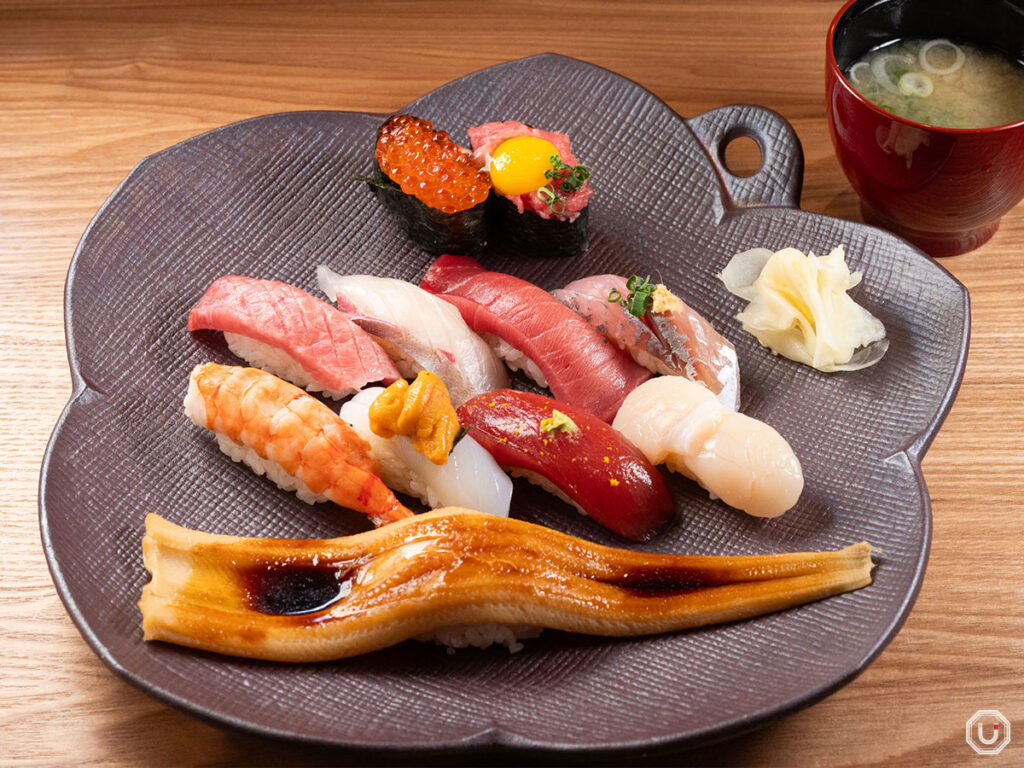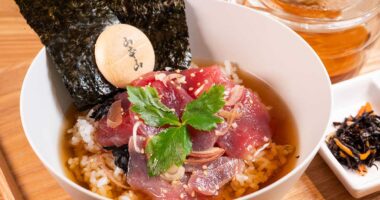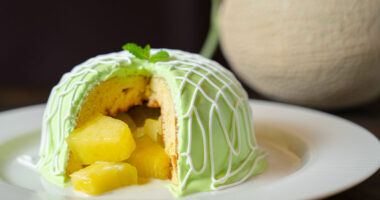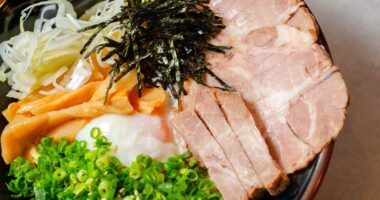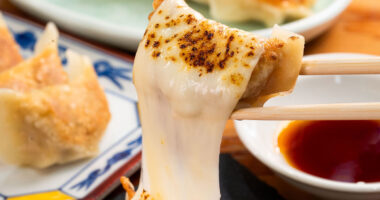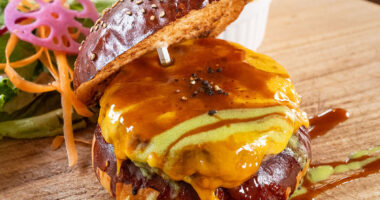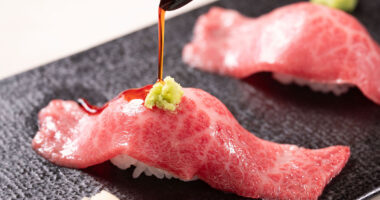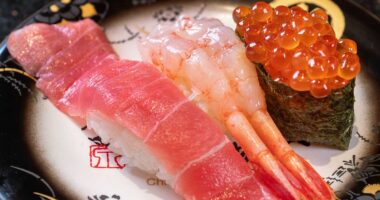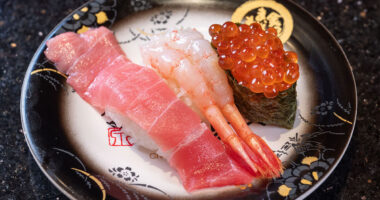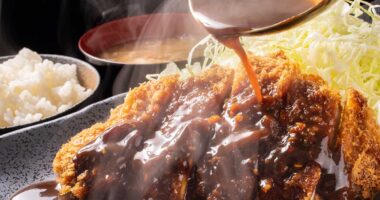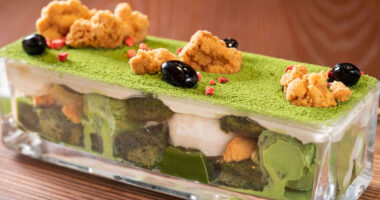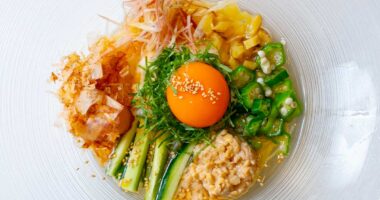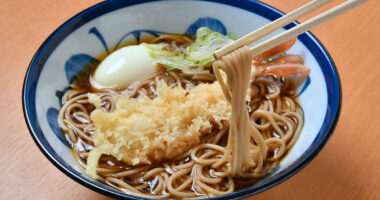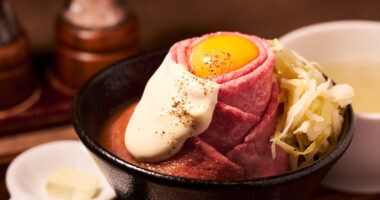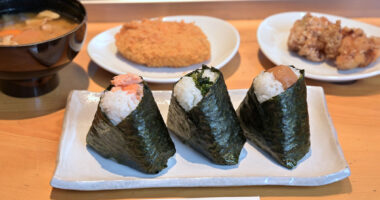Sushi is a key part of Japanese culinary artistry, emphasizing fresh ingredients and harmony of flavors. Whether you are dining at a quick and casual kaiten-zushi (conveyor belt sushi) restaurant or at a more high-end sushi restaurant, knowing a few key customs and tips can help you appreciate your meal and respect the traditions that surround it.
Preparing for your sushi experience
At kaiten-zushi restaurants, you can walk in and seat yourself, but at privately operated sushi shops, making a reservation in advance is highly recommended. This allows the chef to prepare for your visit and may help you secure a better dining experience. It also ensures you’ll get seated since walk-ins may not be possible, especially at popular sushi restaurants.
If you have dietary restrictions, it’s best to check with the restaurant in advance. While some high-end sushi restaurants may be able to adjust the menu, others follow a fixed selection with little room for substitutions. Communication can be a challenge if the chef does not speak English, so having a Japanese-speaking companion can be helpful.
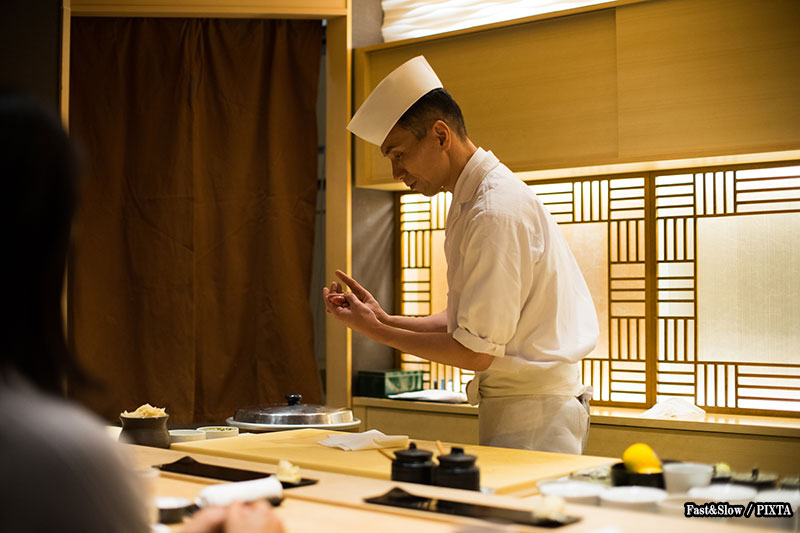
Photo for illustrative purposes
Ambiance and attire
At kaiten-zushi places, the ambiance is casual, and you can select sushi from a moving conveyor belt at your own pace. Privately-owned sushi restaurants, on the other hand, usually offer a more refined and personalized experience. The chef may serve sushi piece by piece, ensuring the optimal balance of flavors. Sitting at the counter lets you observe the chef’s craftsmanship up close, but if you are shy or prefer more privacy, you can opt for a table when available. If you’re unsure about table seating availability, check with the restaurant in advance.
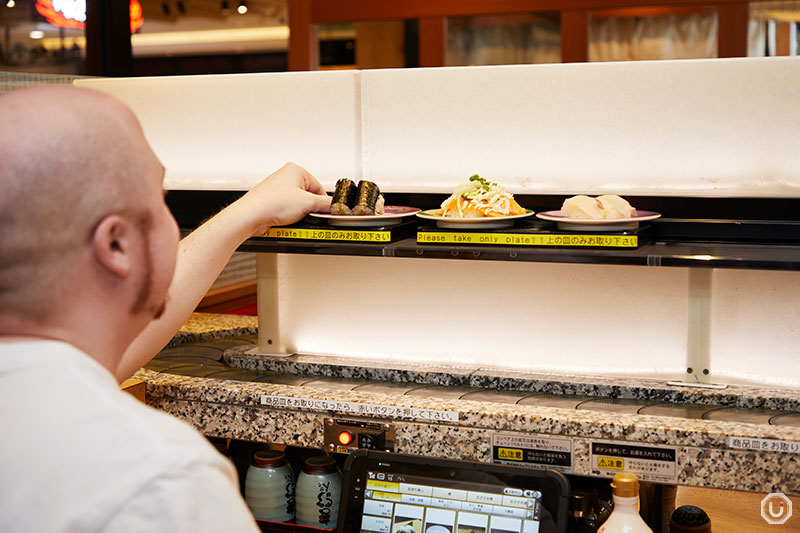
Choosing sushi from the track at Kodawari Kaiten-sushi Magurobito Yodobashi Akiba in Akihabara, Tokyo
High-end sushi restaurants, in particular, maintain a calm and refined atmosphere, where the focus is on the chef’s technique and presentation. Conversations should be kept at a moderate volume to respect the dining experience. While it’s common to take photos of food in Japan, be mindful of your surroundings. If you’re unsure, check with the chef or staff if taking photos and posting them on social media accounts is allowed.
As for dress expectations, they can vary by venue. While casual attire is fine at most kaiten-zushi shops, for example, high-end sushi restaurants often expect diners to dress more neatly. Removing hats during meals is generally considered polite.
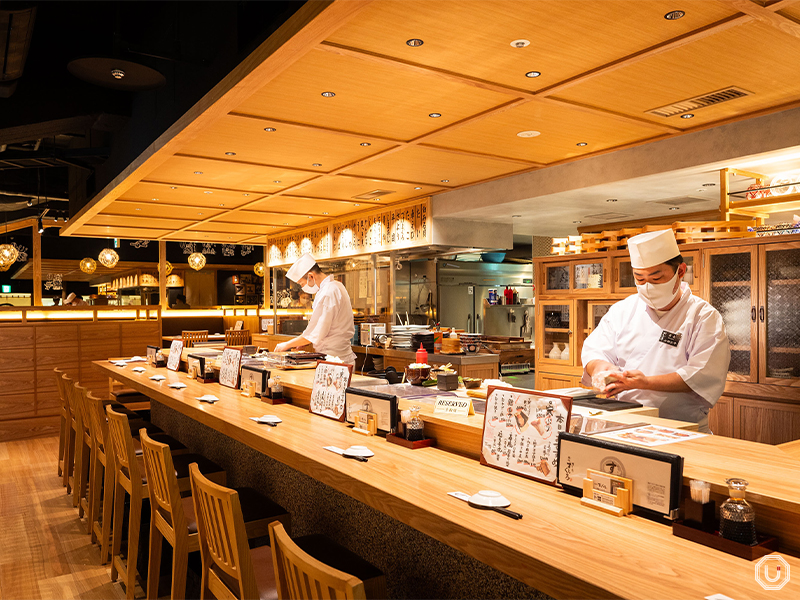
The sushi counter at Kaiten Sushi Ginza Onodera MUSUKO SHIBUYA in Shibuya, Tokyo
Ordering and the natural flow of sushi
A sushi meal typically follows a progression, starting with lighter flavors and moving to richer ones. Many diners begin with white fish such as flounder before transitioning to fattier cuts like tuna and salmon. Shellfish and strongly flavored fish like mackerel often come later in the meal. Curious about different types of sushi? Check out our guide here.
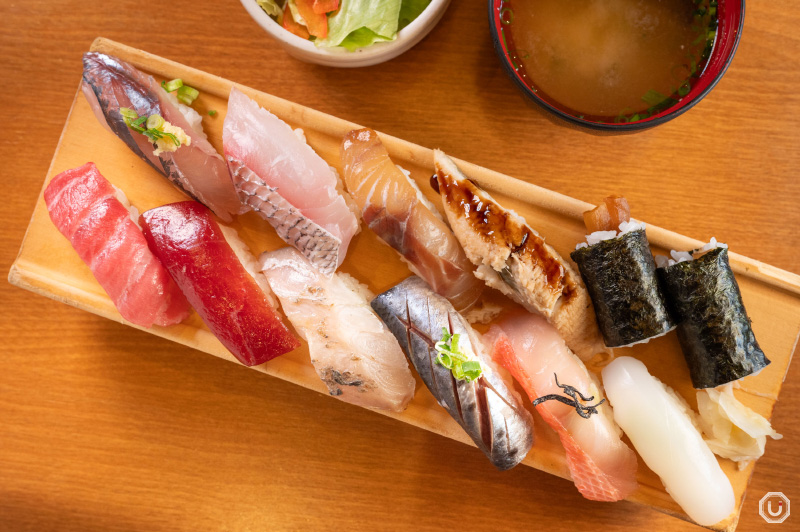
Edomae Sushi Combo at Tokyo Sushi ITAMAE SUSHI Shinjuku Toho Bldg. in Shinjuku, Tokyo
Omakase
If the restaurant offers omakase (chef’s choice), you may wish to consider opting for it. This experience allows the chef to serve the freshest and most seasonal selections in a carefully curated order. Rather than choosing individual pieces, diners entrust the meal to the chef. Substitutions may or not be accommodated, so you should contact the restaurant when booking if you have dietary restrictions. Prices vary widely, so checking in advance is recommended.
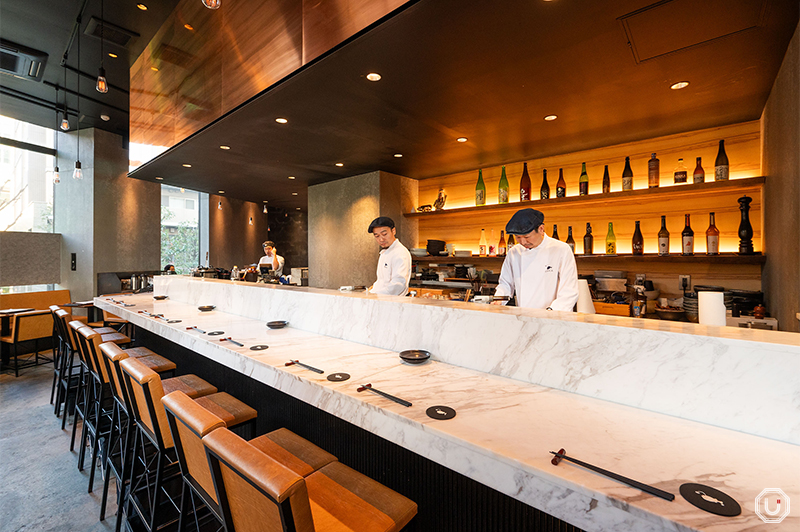
The counter at KINKA sushi bar izakaya Roppongi, which offers an omakase set
Hands or chopsticks?
Both hands and chopsticks are acceptable ways to eat nigiri sushi. If you’re not confident in handling chopsticks, eating with your hands is perfectly fine and is even considered traditional. You can choose to eat sushi with either your hands or chopsticks—whichever feels most comfortable for you.
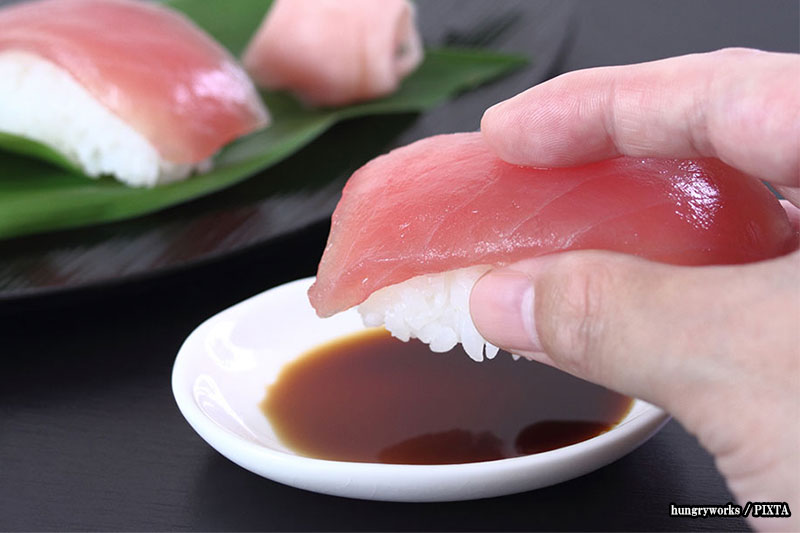
Photo for illustrative purposes
Avoid passing sushi from one pair of chopsticks to another, as this resembles a ritual used in Japanese funerals. It is also considered bad manners to cut a piece of sushi in half with your chopsticks or leave a half-eaten piece on your plate. Sushi is crafted to be eaten in one bite, allowing you to fully appreciate the balance of flavors.
Ginger and wasabi
Pickled ginger (gari in Japanese) is intended to cleanse the palate between different types of sushi, rather than being placed on top of the fish. It refreshes the taste buds so you can fully appreciate each piece of sushi without lingering flavors from the previous one.
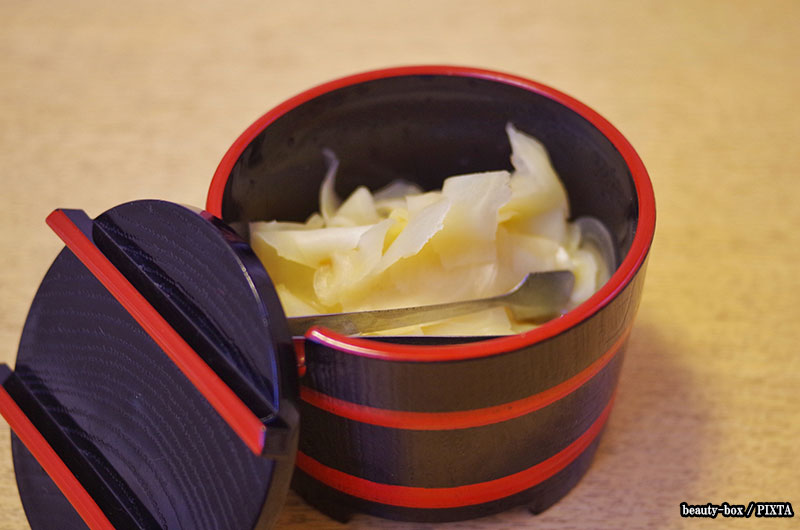
Pickled ginger in a container at a sushi restaurant
For those who enjoy it, the stimulating kick of wasabi is a delightful way to elevate the taste of sushi. However, it should also be used in moderation. Many sushi chefs pre-apply the right amount to complement the sushi perfectly, so it is best to taste the sushi before adding extra. Some people mix wasabi into their soy sauce, but opinions on this practice vary. While it is generally acceptable at casual sushi spots, it may be seen as improper at high-end sushi restaurants. If in doubt, it’s best to apply wasabi directly to the sushi or taste it as the chef has prepared it.
At kaiten-zushi restaurants, both gari and wasabi are usually available on a self-serve basis, either in individual packets or in small containers at the counter or table. These containers are shared among guests and not replaced for each party, so be mindful of hygiene when serving yourself. At high-end sushi restaurants, gari and sometimes wasabi are typically provided at the beginning of the meal, and more can be requested if needed.
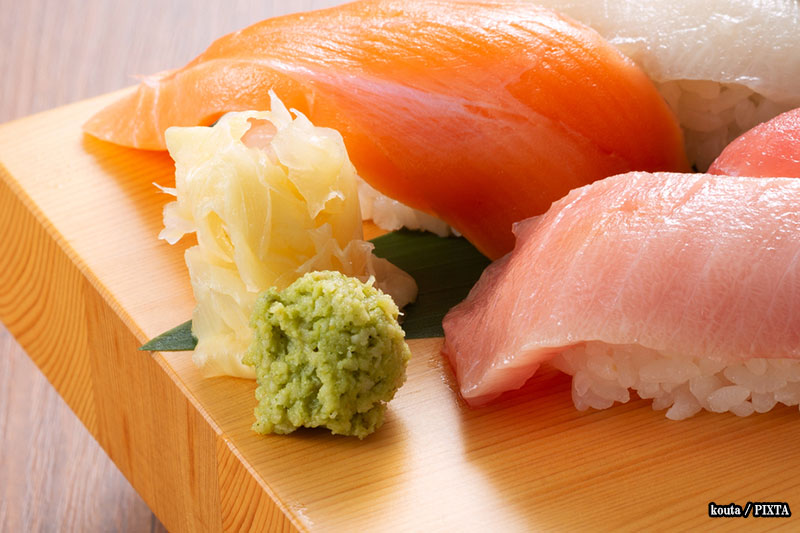
Wasabi and ginger served with a tray of nigiri sushi
Soy sauce
Although other condiments exist, soy sauce is by far the most common accompaniment to a sushi meal. For standard nigiri sushi, dip only the fish side lightly into the soy sauce. Dipping the rice side can cause it to absorb too much liquid and fall apart, not to mention overpowering the taste of the fish. Rolls very easily soak up soy sauce if you dip the whole edge, so just dipping a corner lets you control the amount better. If you find it difficult to dip sushi with chopsticks, this could be a good reason to opt for using your hands.
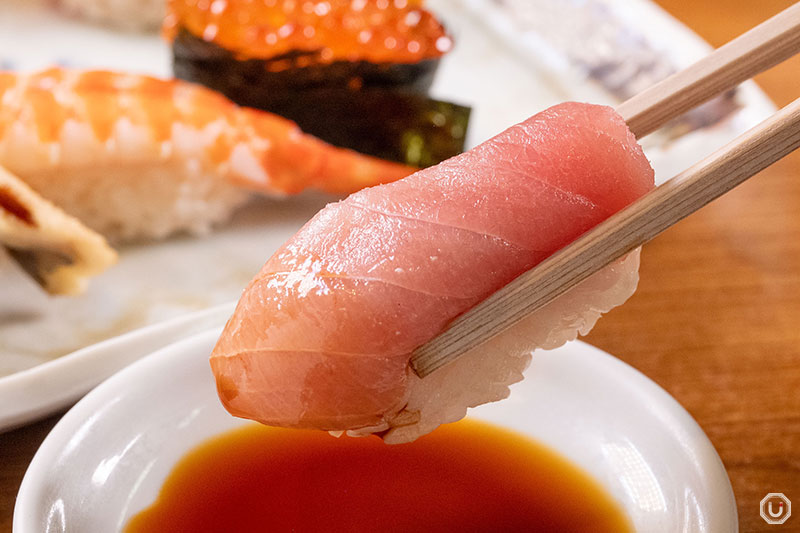
Delicious tuna nigiri dipped in soy sauce at Tsunesushi in Asakusa
For gunkan (battleship sushi), however, dipping directly can be difficult since the ingredients may fall out when tilted. Instead, you can use a piece of gari to lightly brush soy sauce onto the top of the sushi. If a slice of cucumber is included, as is sometimes the case with sushi like ikura (salmon roe) gunkan, you can use it to apply soy sauce as well.
Expressing gratitude
If you’d like to compliment the meal, you can say oishii desu (“It’s delicious”). It is also customary to thank the chef or staff before leaving. You can say arigatō gozaimasu (“Thank you”) or gochisōsama deshita (“It was delicious”) to express polite gratitude.
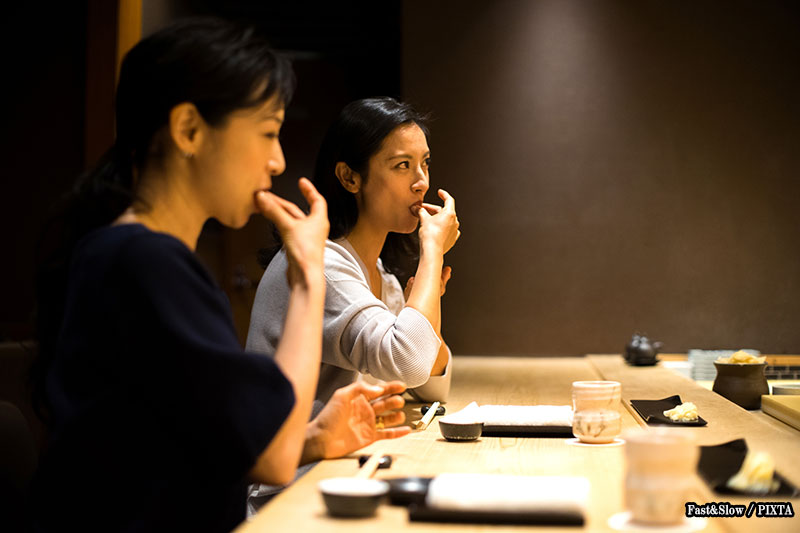
Photo for illustrative purposes
Paying the bill
At high-end sushi restaurants, the bill is typically settled at the counter or discreetly placed before you. To request the check politely, you can say okanjō onegaishimasu. For more details on useful phrases you can use at sushi restaurants, check out our article here.
Whether you’re grabbing a quick bite at a kaiten-zushi spot or indulging in an omakase course at an upscale sushi counter, being mindful of these etiquette practices will enhance your sushi experience when you visit Japan.
